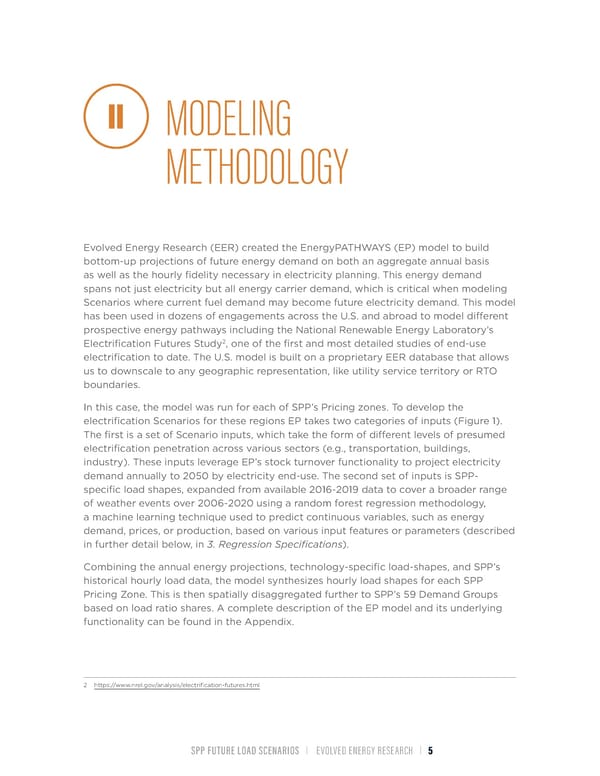II MODELING METHODOLOGY Evolved Energy Research (EER) created the EnergyPATHWAYS (EP) model to build bottom-up projections of future energy demand on both an aggregate annual basis as well as the hourly fidelity necessary in electricity planning. This energy demand spans not just electricity but all energy carrier demand, which is critical when modeling Scenarios where current fuel demand may become future electricity demand. This model has been used in dozens of engagements across the U.S. and abroad to model different prospective energy pathways including the National Renewable Energy Laboratory’s 2 Electrification Futures Study , one of the first and most detailed studies of end-use electrification to date. The U.S. model is built on a proprietary EER database that allows us to downscale to any geographic representation, like utility service territory or RTO boundaries. In this case, the model was run for each of SPP’s Pricing zones. To develop the electrification Scenarios for these regions EP takes two categories of inputs (Figure 1). The first is a set of Scenario inputs, which take the form of different levels of presumed electrification penetration across various sectors (e.g., transportation, buildings, industry). These inputs leverage EP’s stock turnover functionality to project electricity demand annually to 2050 by electricity end-use. The second set of inputs is SPP- specific load shapes, expanded from available 2016-2019 data to cover a broader range of weather events over 2006-2020 using a random forest regression methodology, a machine learning technique used to predict continuous variables, such as energy demand, prices, or production, based on various input features or parameters (described in further detail below, in 3. Regression Specifications). Combining the annual energy projections, technology-specific load-shapes, and SPP’s historical hourly load data, the model synthesizes hourly load shapes for each SPP Pricing Zone. This is then spatially disaggregated further to SPP’s 59 Demand Groups based on load ratio shares. A complete description of the EP model and its underlying functionality can be found in the Appendix. 2 https://www.nrel.gov/analysis/electrification-futures.html SPP FUTURE LOAD SCENARIOS | EVOLVED ENERGY RESEARCH | 5
 Future Load Scenarios for Southwest Power Pool Page 6 Page 8
Future Load Scenarios for Southwest Power Pool Page 6 Page 8